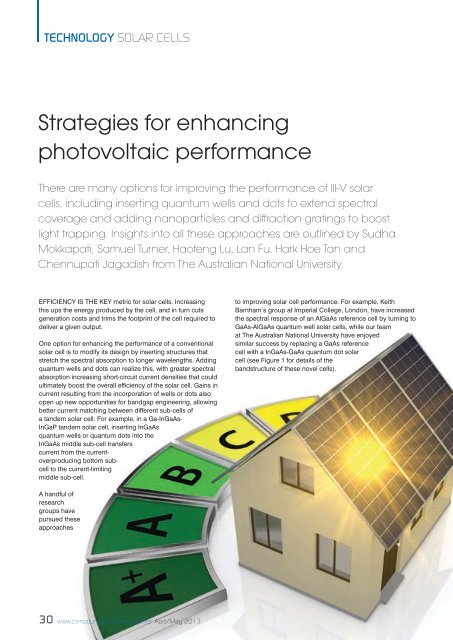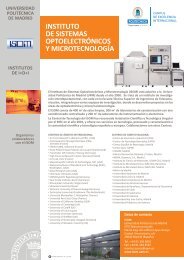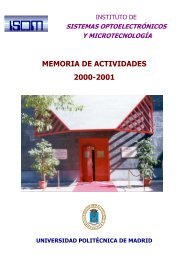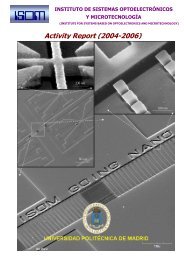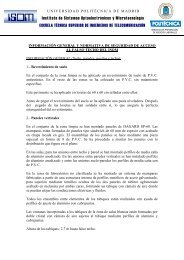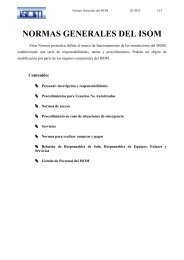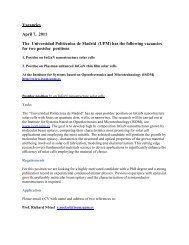Graphene-on-SiC - ISOM
Graphene-on-SiC - ISOM
Graphene-on-SiC - ISOM
Create successful ePaper yourself
Turn your PDF publications into a flip-book with our unique Google optimized e-Paper software.
TECHNOLOGY SOLAR CELLS<br />
Strategies for enhancing<br />
photovoltaic performance<br />
There are many opti<strong>on</strong>s for improving the performance of III-V solar<br />
cells, including inserting quantum wells and dots to extend spectral<br />
coverage and adding nanoparticles and diffracti<strong>on</strong> gratings to boost<br />
light trapping. Insights into all these approaches are outlined by Sudha<br />
Mokkapati, Samuel Turner, Haofeng Lu, Lan Fu, Hark Hoe Tan and<br />
Chennupati Jagadish from The Australian Nati<strong>on</strong>al University.<br />
EfficiEncy is thE kEy metric for solar cells. increasing<br />
this ups the energy produced by the cell, and in turn cuts<br />
generati<strong>on</strong> costs and trims the footprint of the cell required to<br />
deliver a given output.<br />
One opti<strong>on</strong> for enhancing the performance of a c<strong>on</strong>venti<strong>on</strong>al<br />
solar cell is to modify its design by inserting structures that<br />
stretch the spectral absorpti<strong>on</strong> to l<strong>on</strong>ger wavelengths. Adding<br />
quantum wells and dots can realize this, with greater spectral<br />
absorpti<strong>on</strong> increasing short-circuit current densities that could<br />
ultimately boost the overall efficiency of the solar cell. Gains in<br />
current resulting from the incorporati<strong>on</strong> of wells or dots also<br />
open up new opportunities for bandgap engineering, allowing<br />
better current matching between different sub-cells of<br />
a tandem solar cell. for example, in a Ge-inGaAsinGaP<br />
tandem solar cell, inserting inGaAs<br />
quantum wells or quantum dots into the<br />
inGaAs middle sub-cell transfers<br />
current from the currentoverproducing<br />
bottom subcell<br />
to the current-limiting<br />
middle sub-cell.<br />
to improving solar cell performance. for example, keith<br />
Barnham’s group at imperial college, L<strong>on</strong>d<strong>on</strong>, have increased<br />
the spectral resp<strong>on</strong>se of an AlGaAs reference cell by turning to<br />
GaAs-AlGaAs quantum well solar cells, while our team<br />
at the Australian nati<strong>on</strong>al University have enjoyed<br />
similar success by replacing a GaAs reference<br />
cell with a inGaAs-GaAs quantum dot solar<br />
cell (see figure 1 for details of the<br />
bandstructure of these novel cells).<br />
A handful of<br />
research<br />
groups have<br />
pursued these<br />
approaches<br />
30 www.compoundsemic<strong>on</strong>ductor.net April/May 2013


